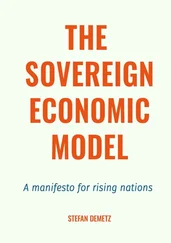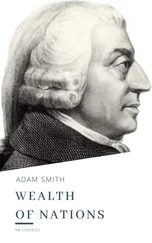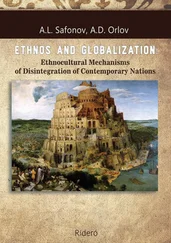The logic of the virtuous circle also meant that such repressive steps would be increasingly infeasible, again because of the positive feedback between inclusive economic and political institutions. Inclusive economic institutions lead to a more equitable distribution of resources than extractive institutions. As such, they empower the citizens at large and thus create a more level playing field, even when it comes to the fight for power. This makes it more difficult for a small elite to crush the masses rather than to give in to their demands, or at least to some of them. The British inclusive institutions had also already unleashed the Industrial Revolution, and Britain was highly urbanized. Using repression against an urban, concentrated, and partially organized and empowered group of people would have been much harder than repressing a peasantry or dependent serfs.
The virtuous circle thus brought the First Reform Act to Britain in 1832. But this was just the beginning. There was still a long road to travel toward real democracy, because in 1832 the elite had only offered what they thought they had to and no more. The issue of parliamentary reform was taken up by the Chartist movement, whose People’s Charter of 1838 included the clauses
A vote for every man twenty-one years of age, of sound mind, and not undergoing punishment for crime.
The ballot.—To protect the elector in the exercise of his vote.
No property qualification for members of Parliament—thus enabling the constituencies to return the man of their choice, be he rich or poor.
Payment of members, thus enabling an honest tradesman, working man, or other person, to serve a constituency, when taken from his business to attend to the interests of the Country.
Equal Constituencies, securing the same amount of representation for the same number of electors, instead of allowing small constituencies to swamp the votes of large ones.
Annual Parliaments, thus presenting the most effectual check to bribery and intimidation, since though a constituency might be bought once in seven years (even with the ballot), no purse could buy a constituency (under a system of universal suffrage) in each ensuing twelve-month; and since members, when elected for a year only, would not be able to defy and betray their constituents as now.
By the “ballot,” they meant the secret ballot and the end of open voting, which had facilitated the buying of votes and the coercion of voters.
The Chartist movement organized a series of mass demonstrations, and throughout this period Parliament continually discussed the potential for further reforms. Though the Chartists disintegrated after 1848, they were followed by the National Reform Union, founded in 1864, and the Reform League, which was founded in 1865. In July 1866, major pro-reform riots in Hyde Park brought reform right to the top of the political agenda once more. This pressure bore dividends in the form of the Second Reform Act of 1867, in which the total electorate was doubled and working-class voters became the majority in all urban constituencies. Shortly afterward the secret ballot was introduced and moves were made to eliminate corrupt electoral practices such as “treating” (essentially buying votes in exchange for which the voter received a treat, usually money, food, or alcohol). The electorate was doubled again by the Third Reform Act of 1884, when 60 percent of adult males were enfranchised. Following the First World War, the Representation of the People Act of 1918 gave the vote to all adult males over the age of twenty-one, and to women over the age of thirty who were taxpayers or married to taxpayers. Ultimately, all women also received the vote on the same terms as men in 1928. The measures of 1918 were negotiated during the war and reflected a quid pro quo between the government and the working classes, who were needed to fight and produce munitions. The government may also have taken note of the radicalism of the Russian Revolution.
Parallel with the gradual development of more inclusive political institutions was a movement toward even more inclusive economic institutions. One major consequence of the First Reform Act was the repeal of the Corn Laws in 1846. As we saw in chapter 7, the Corn Laws banned the import of grains and cereals, keeping their prices high and ensuring lucrative profits for large landowners. The new parliamentarians from Manchester and Birmingham wanted cheap corn and low wages. They won, and the landed interests suffered a major defeat.
The changes in the electorate and other dimensions of political institutions taking place during the course of the nineteenth century were followed by further reforms. In 1871 the Liberal prime minister Gladstone opened up the civil service to public examination, making it meritocratic, and thus continuing the process of political centralization and the building of state institutions that started during the Tudor period. Liberal and Tory governments during this period introduced a considerable amount of labor market legislation. For example, the Masters and Servants Acts, which allowed employers to use the law to reduce the mobility of their workers, was repealed, changing the nature of labor relations in favor of workers. During 1906–1914, the Liberal Party, under the leadership of H. H. Asquith and David Lloyd George, began to use the state to provide far more public services, including health and unemployment insurance, government-financed pensions, minimum wages, and a commitment to redistributive taxation. As a result of these fiscal changes, taxes as a proportion of national product more than doubled in the last three decades of the nineteenth century, and then doubled again in the first three decades of the twentieth. The tax system also became more “progressive,” so that wealthier people bore a heavier burden.
Meanwhile, the education system, which was previously either primarily for the elite, run by religious denominations, or required poor people to pay fees, was made more accessible to the masses; the Education Act of 1870 committed the government to the systematic provision of universal education for the first time. Education became free of charge in 1891. The school-leaving age was set at eleven in 1893. In 1899 it was increased to twelve, and special provisions for the children of needy families were introduced. As a result of these changes, the proportion of ten-year-olds enrolled in school, which stood at a disappointing 40 percent in 1870, increased to 100 percent in 1900. Finally, the Education Act of 1902 led to a large expansion in resources for schools and introduced the grammar schools, which subsequently became the foundation of secondary education in Britain.
In fact, the British example, an illustration of the virtuous circle of inclusive institutions, provides an example of a “gradual virtuous circle.” The political changes were unmistakably toward more inclusive political institutions and were the result of demands from empowered masses. But they were also gradual. Every decade another step, sometimes smaller, sometimes larger, was taken toward democracy. There was conflict over each step, and the outcome of each was contingent. But the virtuous circle created forces that reduced the stakes involved in clinging to power. It also spurred the rule of law, making it harder to use force against those who were demanding what these elites had themselves demanded from Stuart monarchs. It became less likely that this conflict would turn into an all-out revolution and more likely that it would be resolved in favor of greater inclusiveness. There is great virtue in this sort of gradual change. It is less threatening to the elite than the wholesale overthrow of the system. Each step is small, and it makes sense to give in to a small demand rather than create a major showdown. This partly explains how the Corn Law was repealed without more serious conflict. By 1846 landowners could no longer control legislation in Parliament. This was an outcome of the First Reform Act. However, if in 1832 the expansion of the electorate, the reform of the rotten boroughs, and the repeal of the Corn Laws had all been on the table, landowners would have put up much more resistance. The fact that there were first limited political reforms and that repeal of the Corn Laws came on the agenda only later defused conflict.
Читать дальше












